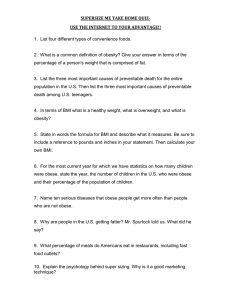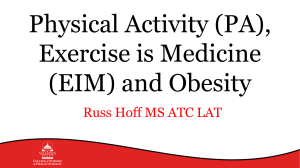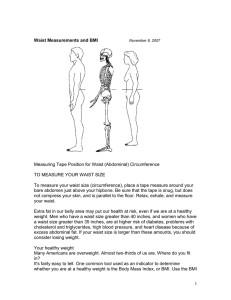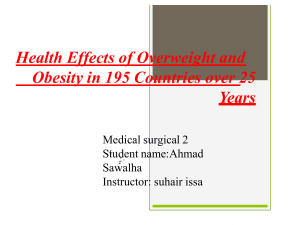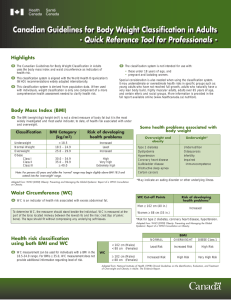Get Physically Active to Get Fit About Us What is a Health Disparity?
advertisement
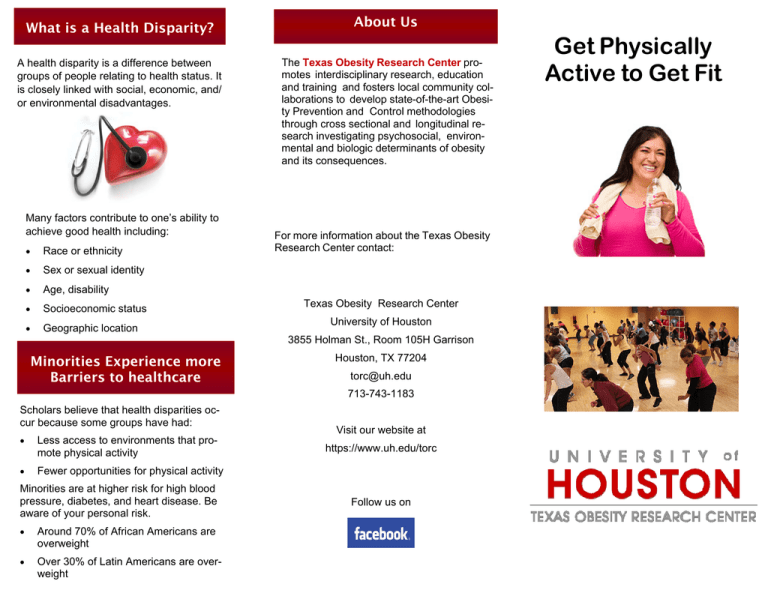
What is a Health Disparity? A health disparity is a difference between groups of people relating to health status. It is closely linked with social, economic, and/ or environmental disadvantages. Many factors contribute to one’s ability to achieve good health including: Race or ethnicity Sex or sexual identity Age, disability Socioeconomic status Geographic location About Us The Texas Obesity Research Center promotes interdisciplinary research, education and training and fosters local community collaborations to develop state-of-the-art Obesity Prevention and Control methodologies through cross sectional and longitudinal research investigating psychosocial, environmental and biologic determinants of obesity and its consequences. For more information about the Texas Obesity Research Center contact: Texas Obesity Research Center University of Houston 3855 Holman St., Room 105H Garrison Minorities Experience more Barriers to healthcare Houston, TX 77204 torc@uh.edu 713-743-1183 Scholars believe that health disparities occur because some groups have had: Less access to environments that promote physical activity Fewer opportunities for physical activity Minorities are at higher risk for high blood pressure, diabetes, and heart disease. Be aware of your personal risk. Around 70% of African Americans are overweight Over 30% of Latin Americans are overweight Visit our website at https://www.uh.edu/torc Follow us on Get Physically Active to Get Fit Risk for Chronic Disease The Importance of Exercise Being overweight, obese, or having an undesirable waist circumference can put you at a higher risk for: Exercise can offer health benefits such as: Type 2 diabetes Lowering LDL (bad) cholesterol Heart Disease Lowering blood pressure High Blood Pressure Weight loss Improved energy and mood Am I Obese Body Mass Index (BMI) is a general measure of weight for height (kg/m2) to measure disease risk in adults Underweight Healthy Weight Overweight Obese BMI Below 18.5 18.5-24.9 25.0-29.9 Greater than 30 You can calculate your BMI online at: http://www.nhlbisupport.com/bmi Moderate vs. Vigorous Physical Activity Stay Active Exercising for 150-300 minutes per week of moderate-intensity exercise of 75-150 minutes a week of vigorousintensity exercise will result in many health benefits. Muscle-strengthening activities should be done at least 2 days a week to increase flexibility and overall strength Moderate-intensity exercise increases breathing and heart rates. You should work up a sweat, but still be able to hold a conversation during this kind of exercise. Walking briskly Gardening or yard work Dancing Tennis, racquetball You can calculate your BMI online at: http:// Waist Circumference Waist circumference is used to screen for health risks. To measure waist circumference, place measuring tape at the level of the belly button. Tips for Increasing Daily Activity Vigorous-intensity exercise refers greatly increases breathing and heart rates. It is substantially difficult for you to hold a conversation during this type of exercise. Jogging/Running, swimming Bicycling, aerobics Soccer, backetball Park farther from the entrance when you visit the store Walk or run with a partner or group Take 2 or 3 short walking breaks at work each day Take the stairs instead of the elevator




